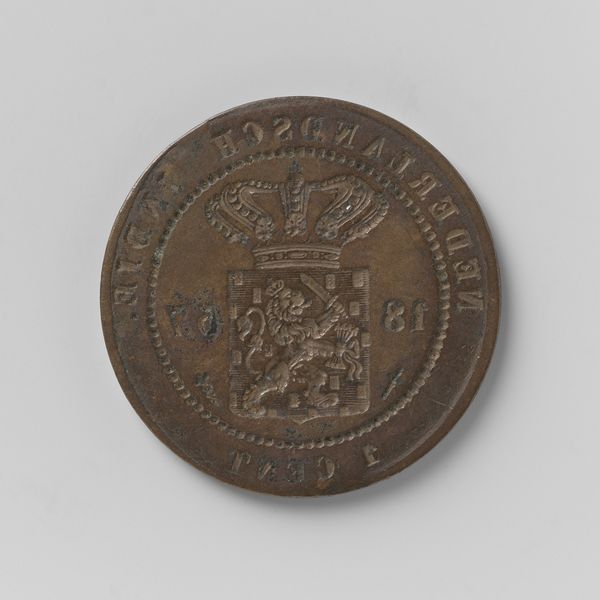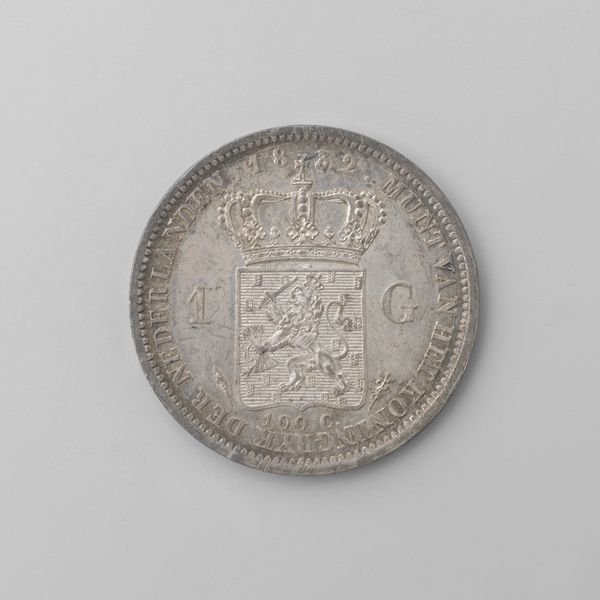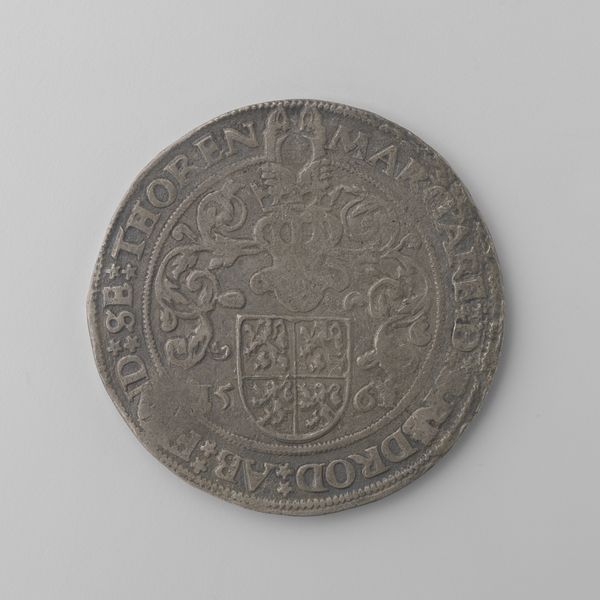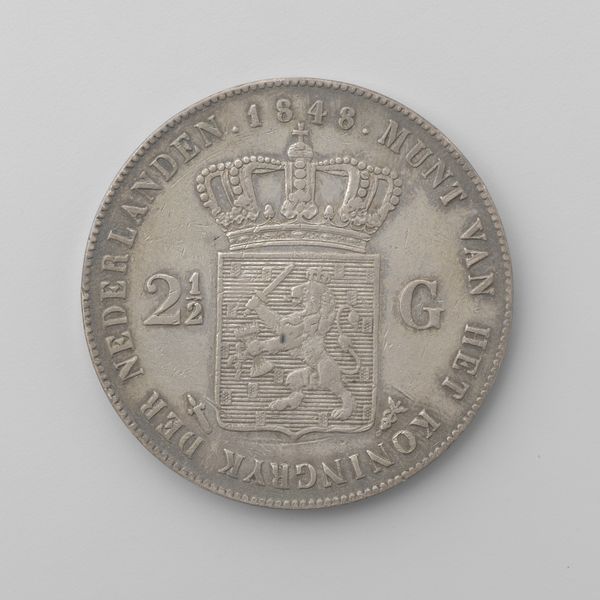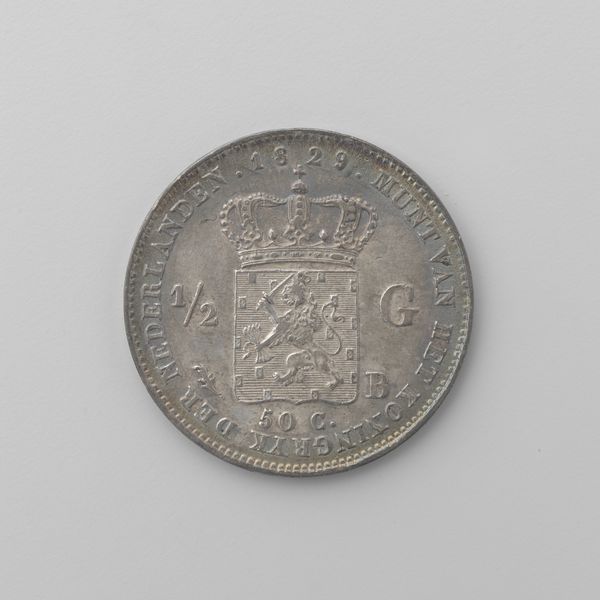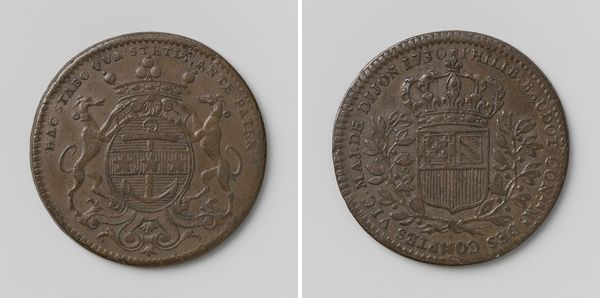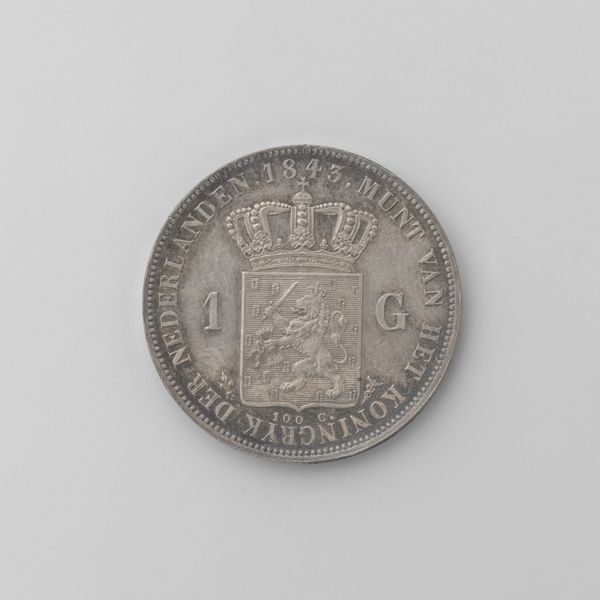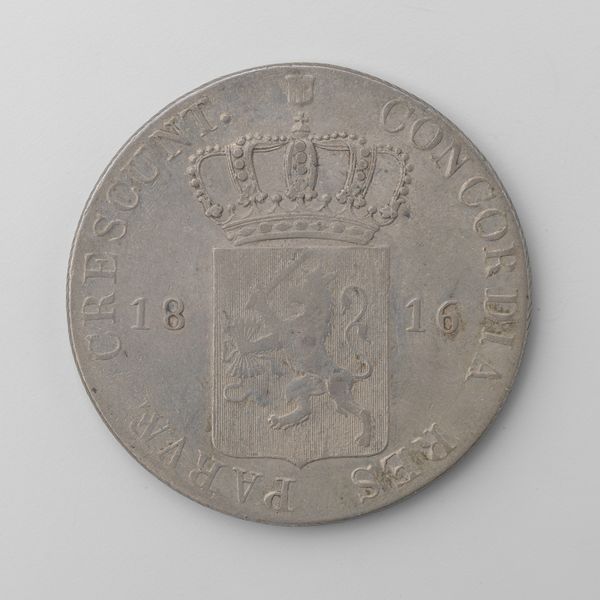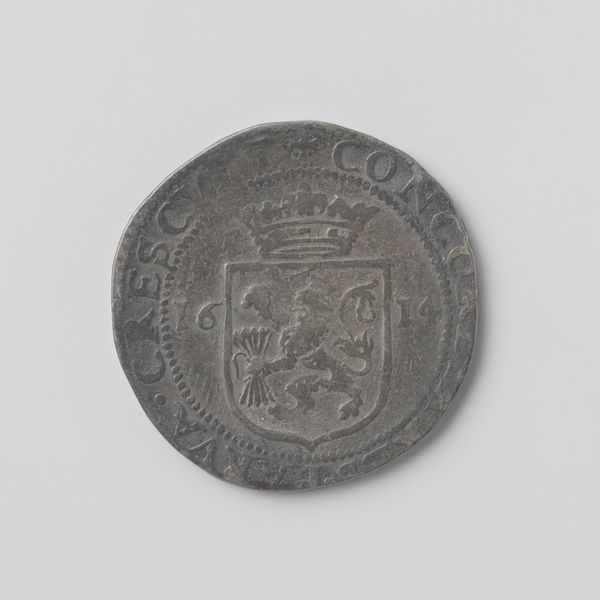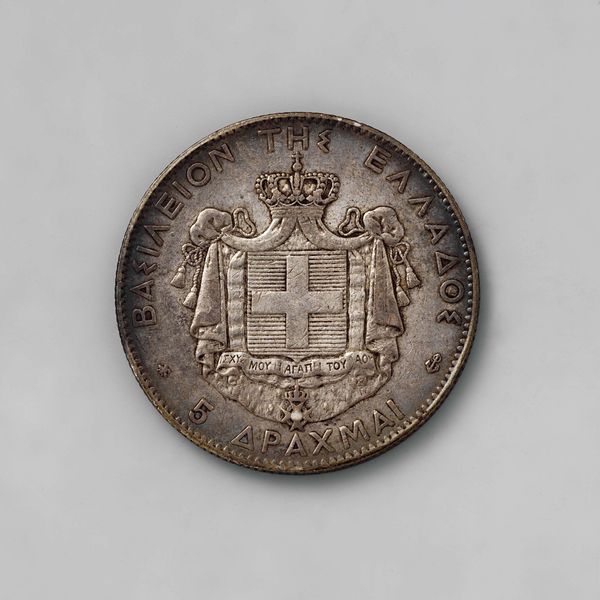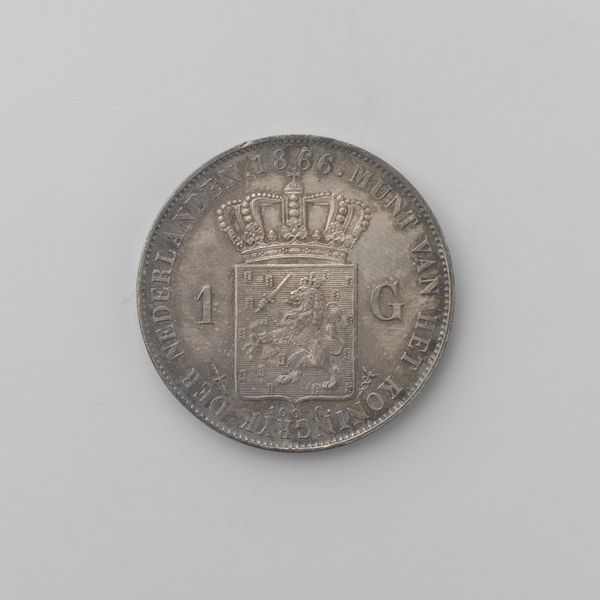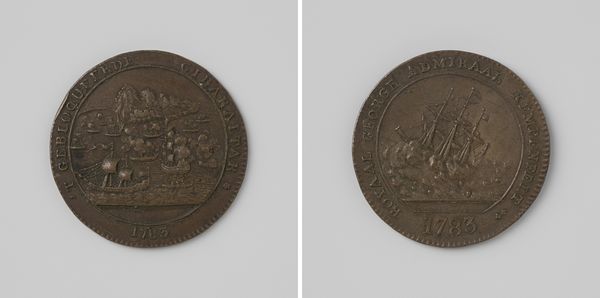
metal, relief, embossing, sculpture
#
portrait
#
baroque
#
metal
#
stone
#
relief
#
embossing
#
sculpture
Copyright: Rijks Museum: Open Domain
Curator: What a formidable object. My first thought is how powerful it looks in its symbolism, particularly considering its comparatively small size. Editor: It feels weighty, doesn’t it? This Baroque metal relief, known as "Zegel Willem IV," dates roughly between 1700 and 1750. Look at the detail achieved through embossing. You can practically feel the pressure exerted. Curator: Indeed. Seals were crucial instruments of power and legitimacy. They visually declared authority and authenticated documents. Think of the symbolic weight behind each impression made with this seal. Editor: Precisely. The material matters immensely. It’s metal—sturdy, lasting. Consider the craftsman: meticulously working, understanding the properties of the metal, using their tools to embody dynastic authority. The entire process highlights a tangible expression of power. Curator: This particular seal represents Willem IV, evident in the inscription, with its visual assertion of inherited right and political strength. It projects an image meant to resonate throughout his sphere of influence. The two heraldic lions on either side emphasize that sense of power, framing his family's crest. Editor: Note the circular format—a unifying shape, all the elements contained within it. Every detail reinforces a specific message, meticulously crafted and consciously reproduced. You've got to respect the artisans creating these small but significant forms of art, too, as important labor. Curator: Absolutely. The choice of imagery wasn't accidental, every lion, crown and inscription meant to convey Willem's authority and status, intended for a very specific audience to cement perceptions about him and the state. It acts as a symbol in establishing a social hierarchy. Editor: Thinking about it as an object and artifact offers tangible insight to its place in society; feeling its material allows us a further access into a sense of what was powerful. Curator: Examining its function and its historical moment alongside its appearance enhances our comprehension of the interplay between art, authority, and societal values during that period. Editor: Yes, getting lost in this craftsmanship definitely reminds us to see past representation. There's a lot to be appreciated here as hand-made cultural material.
Comments
No comments
Be the first to comment and join the conversation on the ultimate creative platform.
